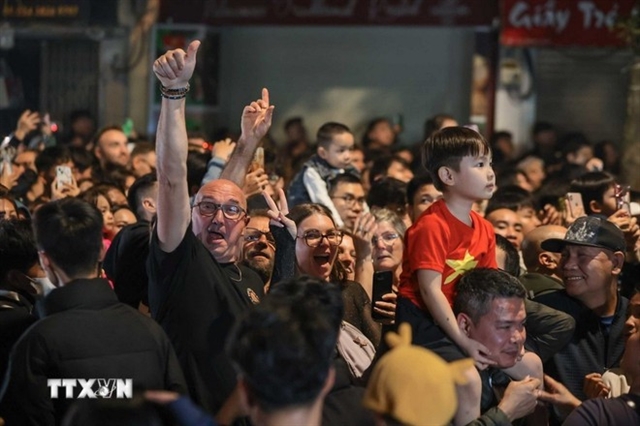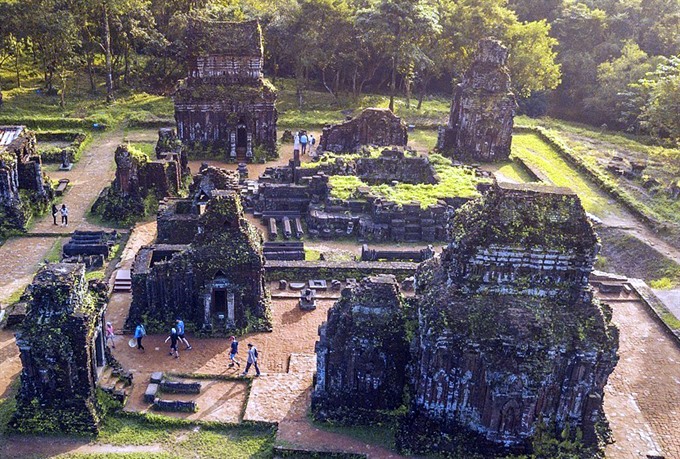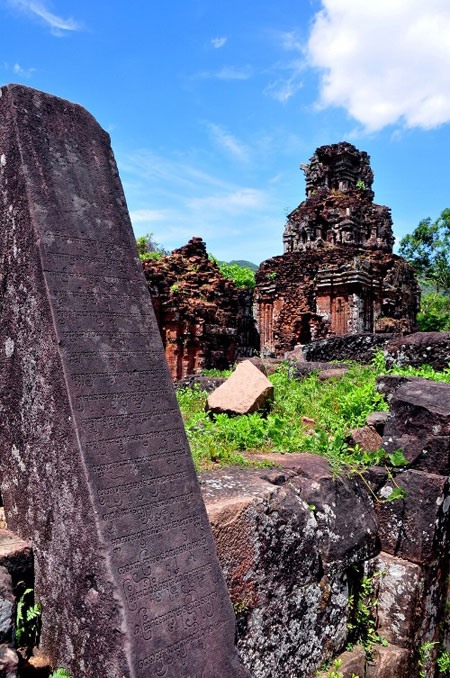 Life & Style
Life & Style

Sanskrit inscriptions on stone slabs at the Mỹ Sơn Sanctuary, a UNESCO World Heritage Site in central Quảng Nam province, will be translated into Vietnamese and English, as part of a joint project between Vietnamese and Indian scientists.
 |
| An aerial view over Mỹ Sơn Sanctuary. — VNA/VNS Photo Trọng Đạt |
QUẢNG NAM — Sanskrit inscriptions on stone slabs at the Mỹ Sơn Sanctuary, a UNESCO World Heritage Site in the central province of Quảng Nam, will be translated into Vietnamese and English, as part of a joint project between Vietnamese and Indian scientists.
As part of the project, which began on April 3, specialists from India will study the slabs and help Việt Nam translate the wording from Sanskrit, the ancient liturgical language of Hinduism, to Vietnamese and English.
This is part of the work to preserve the sanctuary and shed light on its cultural, historical, religious and architectural heritage hidden in the towers there for thousands of years.
The complex has Sanskrit epitaphs engraved on 31 slabs made of brick and stone, the main materials used in building Mỹ Sơn Sanctuary, said Nguyễn Công Khiết, deputy head of the sanctuary’s management board.
The biggest challenge the translators face is that many of the slabs were broken into pieces, and some pieces have been lost, adding to the time and effort needed to complete the translations, Khiết noted.
 |
| A stone slab with Sanskrit inscriptions at Mỹ Sơn Sanctuary. — Photo dulichvietnam.com.vn |
In addition to this project, the Government of India has provided some US$2.2 million in financial support to Quảng Nam to help the province restore and preserve the UNESCO World Heritage Site, in work planned between 2016 and 2021.
During the excavation at the site during 2017, experts found a number of buried ancient objects, including tops of towers with sophisticated decorations, different types of building materials, and lion-headed figurines. They also discovered traces of a pathways leading to the heart of the complex, which was presumably reserved for members of royal families and religious dignitaries during holy rituals.
Once the religious and political capital of Chăm Pa Kingdom, Mỹ Sơn Sanctuary is located in a hilly landscape in Duy Phú Commune, Duy Xuyên District, about 70 km southwest of central city of Đà Nẵng and 40km from Hội An City.
The site is made up of eight groups of 71 monuments built from the 7th to 13th centuries.
The first buildings in Mỹ Sơn date to the 4th century, under the reign of Bhadravarman for the worship of the god Shiva-Bhadresvara. The temple was later destroyed.
At the beginning of the 7th century, King Sambhuvarman had it rebuilt and reconsecrated as Sambhu-Bhadresvara.
Each new monarch came to Mỹ Sơn after his accession to the throne for the ceremony of purification and to present offerings and erect new monuments, which explains why Mỹ Sơn is the only place where Chăm art flourished without interruption from the 7th to 13th century. — VNS




